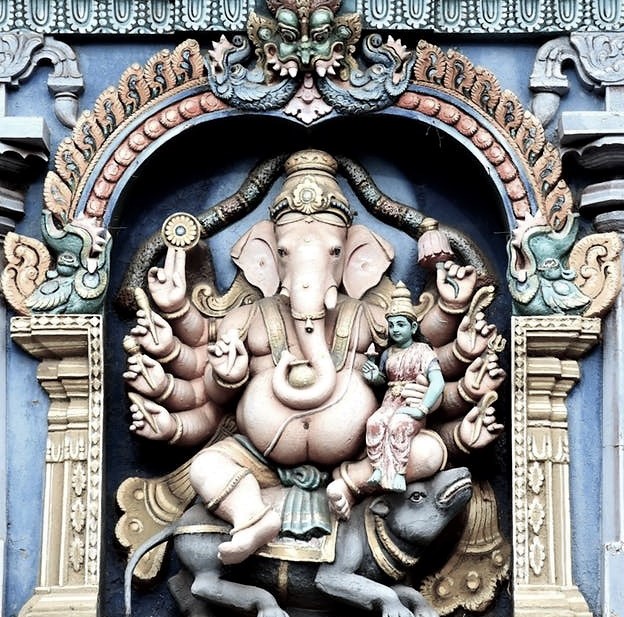- Special FeaturesFoundation Year999 CE - Chandela king Dhanga.Sthala TreeTheerthamRathamArchitectureCentral Indian nagaraOther Speciality
- Sthala Puran
The Vishvanatha Temple is a Hindu temple in Madhya Pradesh, India. It is located among the western group of Khajuraho Monuments, a UNESCO World Heritage site. The temple is dedicated to Shiva, who is also known as "Vishvanatha" meaning "Lord of the Universe".
The temple is believed to have been commissioned by the Chandela king Dhanga, and was probably completed in 999 CE or 1002 CE. Its architectural style is similar to that of the older Lakshmana Temple and the newer Kandariya Mahadeva Temple. It features several sculptures of various deities, surasundaris (celestial maidens), couples making love, and mythical creatures.
The inscription mentions that Dhanga's descendant Jayavarman had it re-written in clear letters in 1173 VS. It states that Dhanga constructed a magnificent Shiva temple with two lingas (symbols of Shiva). One linga – Marakateshvara ("Emerald Lord") – was made of emerald. The other linga – Pramathanatha ("Lord of Pramathas or goblin-like spirits") – was made of stone. The inscription appears to have been issued after Dhanga's death: it states that after living for more than a hundred years, Dhanga attained moksha by abandoning his body in the waters of Ganga and Yamuna. Unlike some other Chandela temple inscriptions, it does not mention the Pratihara overlords of the Chandelas. This suggests that the Chandelas were no longer vassals of the Pratiharas by this time. The bit about the emerald linga (possibly an emerald-studded linga) also supports this theory. According to the Puranas, a jewel-studded linga is an appropriate donation to be made upon the fulfilment of a desire. This suggests that Dhanga built the temple after attaining a high political status as a sovereign.
- Architecture
The Vishvanatha temple is characteristic of the Central Indian architectural style that begins with Lakshmana Temple (c. 930–950 CE) and culminates with the Kandariya Mahadeva Temple (c. 1030 CE).[12] These three temples represent the most fully developed style at Khajuraho.
The Vishvanatha site was designed as a panchayatana complex, which comprises one main shrine surrounded by four smaller subsidiary shrines. However, only two of the smaller shrines now survive. The main shrine is oriented towards the east. Nandi Temple, the shrine to its east is dedicated to Shiva's mount Nandi, whose 2.2 m high statue faces the main shrine. The shrine in the south-west is dedicated to Shiva's consort Parvati. The Parvati temple is partially damaged, with only its sanctum (garbhagriha) and roof (shikhara) surviving. The sanctum houses an idol of Parvati standing on an iguana.
The main shrine is an example of the nagara style: it contains an entrance porch (ardha-mandapa), a small hall (mandapa), a large hall (maha -mandapa), a vestibule (antarala), and a sanctum (garbhagriha) with a roof tower (shikhara). All these are located on a base with several sculptures. The stairs leading from the base to the porch are flanked by lions on one side, and elephants on the other side.
The sanctum has a stone linga; the emerald linga mentioned in the inscription is missing. The linga is surrounded by a passage for parikrama (circumambulation). The sanctum has balconies on three sides for light and ventilation.
- Alankar of Deity
- Prayers and BenefitsSpecial Vratas and PrayersOfferings to DeityStotras and Mantras
- Festivals
- Sodasha Upcharas
- Prasadhas
- Social ActivitiesAnnadhanMarriageEar BoringHead ShaveDanaasEducation FacilitiesSocial DrivesOther Activities
- Arjita Seva
- Tags

